A place of honor on theAcropolis of Athens is dedicated to a figure unknown to most today, but who in the days of Magna Graecia ’s splendor was considered the first great hero. We might say the first hero of modern history whose deeds transcended centuries and seas. Right beside the Parthenon, in fact, is the statue of Pháyllos, or Phaillus from Crotone, the Calabrian town overlooking the Ionian Sea and home to one of the most important Hellenic ports in the Mediterranean. Ancient Kroton, the home of Pythagoras and the seat of his school, one of the most important places in Italy with traces of Hellenic culture that, however, does not find its due in terms of culture and tourism. No wonder Faillo is not well known since in his own Crotone there is nothing to remember his name or deeds: no statue, no monument, no square, just a street outside the city, anonymous and in the middle of fields.
But who was he? In the Second Persian War, when Greece was in check, ambassadors were sent to all the colonies of Magna Graecia to ask for military support but no one wanted to implicate himself to save the motherland from defeat. Only Phaillus and his Crotonians decided to go to battle, and in the famous bloody and victorious naval battle, which went down in history as the Battle of Salamis, he distinguished himself by heroism. The decisive battle was won and the Persians retreated. So distinguished was he that Herodotus, in Book VIII of the Histories, wrote: “Among the people stationed beyond that boundary the only ones who sent relief to Greece in danger were the Crotonians, with a single ship under the orders of Phaillus, three times victor at the Pythian games. The Crotonians are of Achaean stock.”
Phaillos had great honors, a statue was also erected to him at Delphi in the temple of Apollo, and in 1889 an epigraph engraved on marble was discovered adjacent to the Parthenon in Athens that read, “Phayllos dedicated, three times victor in the Pythian agon and victor of the ships that Asia sent (against Greece).” And his figure traveled through history so much so that more than a century later Alexander the Great himself, in 331 B.C., victorious against Darius III’s Persia at the Battle of Gaugamela, sent a ship filled with gold from the spoils of war as a gift to Crotone “in honor of the only Greek polis of the West that did not abandon its Greek brothers.”
Crotone, with its deep roots rooted in the culture of the heyday of Hellenic civilization, boasts an archaeological park with important remains and traces of antiquity, the Archaeological Park of Capo Colonna, so called because a single Doric-style column from the great temple that stood overlooking the sea and probably collapsed when that part of the coastline sank.

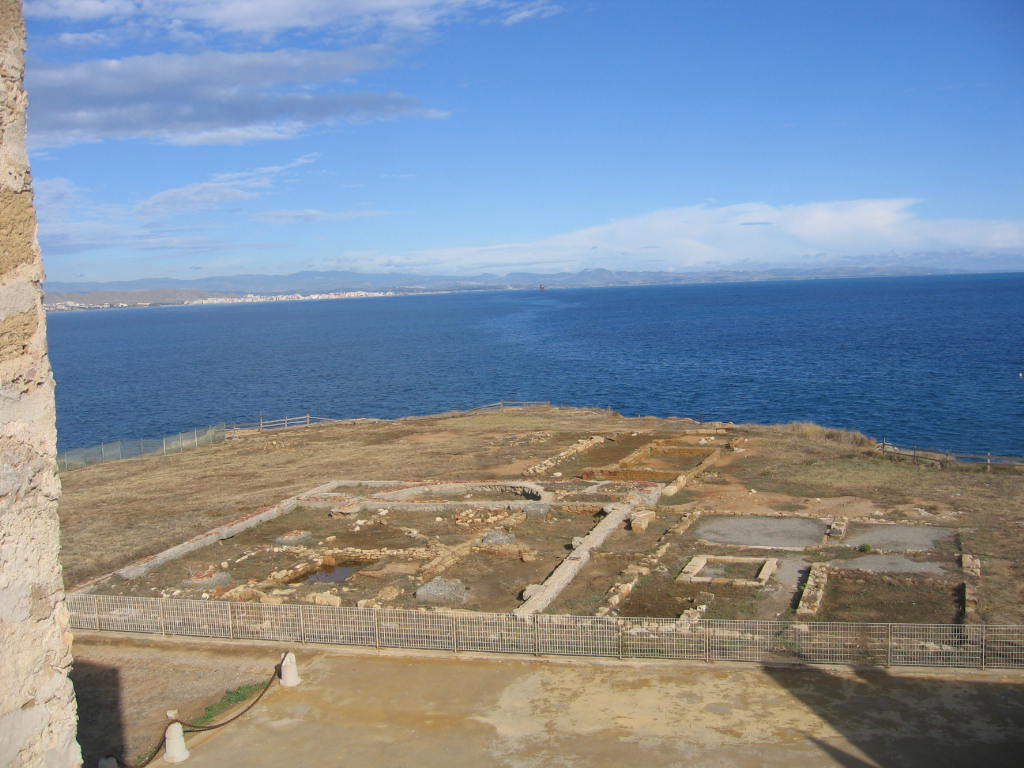

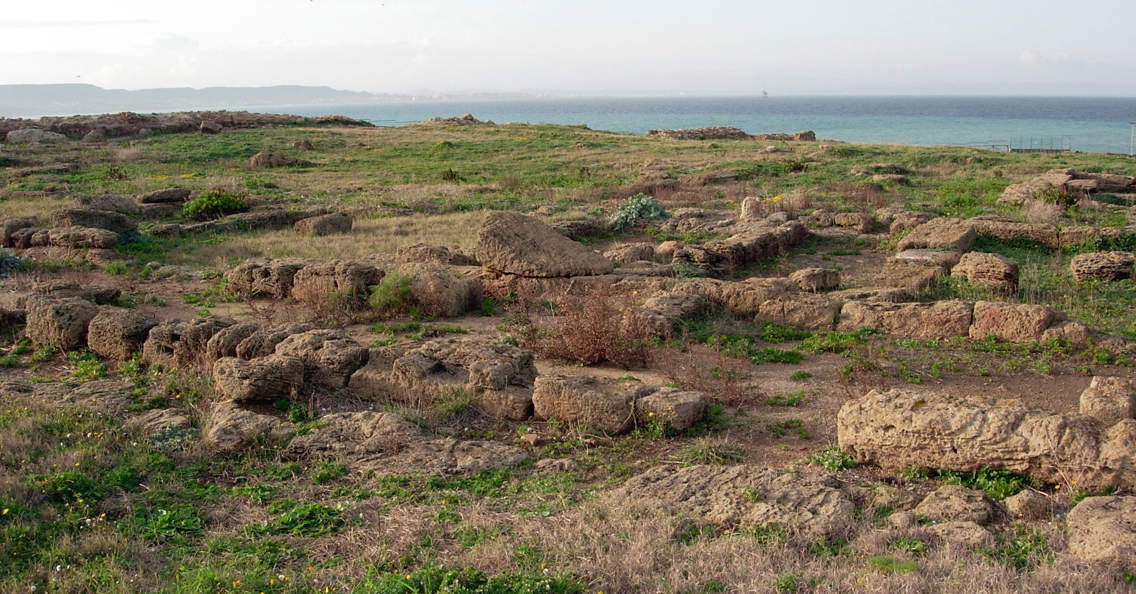
Ancient Kroton was founded by a group of settlers, led by the ecist Myskellos and coming from Rhype, a mountainous village in Achaia, in the final foreshortening of the 8th century B.C. Kroton would gradually become the most important landmark among the Greek settlements in the northern arc of the Ionian coast, especially when, at the end of the 6th century B.C, it defeated and buried its rival and neighbor Sybaris and when, with the presence of the philosopher Pythagoras, it became the seat of its important philosophical school. And for that matter, the area occupied by the new polis, which is organized by axes orthogonal to the shore of the Ionian Sea with three large urban blocks oriented with deviations of 30 degrees to the east, is impressive. Archaeological research has so far verified an extension of 650 hectares; the circuit of the walls, witness an authoritative source such as Titus Livy, would amount to about 17 km. By far this is one of the largest urban realities of Magna Graeecia, which the very important sanctuary of Hera at Capo Colonna, known throughout the ancient world, made even more famous.
The Capo Colonna Archaeological Park, 10 km from present-day Crotone, covers about 50 hectares, occupying the easternmost tip of the Capo Colonna promontory, known in antiquity as “Lakinion akron.” It includes the archaeological area, circumscribed by Roman-era walls, a wooded and scrubland area, symbolic of the forest sacred to Hera, and the Museum area. In the archaeological area are the remains of theHeraion Lakinion, an extra-urban sanctuary of the Greek colony of Crotone, still active in Roman times. A highly revered place of worship, also known to have been frequented by Pythagoras, in the fifth century B.C. it became the seat of the Italiote League, a confederation with a political and military character that brought together all the Western Greeks. The shrine represented an essential reference point for navigation and a safe haven, which the goddess vouched for. Hera also protected nature and particularly cattle, which grazed freely within the forest sacred to her.
Geographically it is the promontory that determines the southern limit of the Gulf of Taranto, but also the easternmost tip of the C?labrian peninsula. This method of indicating the limits of navigation and areas of influence was generalized and derived from the “inshore” type of navigation of the time; even the treaties between Rome and Carthage took a promontory (capo Bello) as the limit insuperable by Roman ships. The modern place-name is due to the presence of the only remaining erected column of the temple dedicated to Hera Lacinia: a sanctuary that was used as a quarry of worked stones for the castle, port and noble palaces of the city of Crotone, until only the lone column remained in sight of sailors, erected among the ruins.
Capo Colonna is also linked to the figure of Hannibal, who departed from here to return to Carthage. The most important building in the sanctuary, as anticipated, is the great Doric temple of Hera Lacinia (the temple marked with the letter A in the Park), near the edge of the cliff. Built around 470-460 B.C., traces of the foundation pits and part of the eastern stylobate are preserved, with a single surviving column that has become the emblem of the Park and the promontory. In the sacred area are the remains of an older archaic place of worship (a building that in the Park is marked with the letter B), from which come the precious votive objects from the Treasury of Hera, preserved in the National Archaeological Museum in Crotone. Built at the beginning of the 6th century B.C., it became, at the time of the founding of Temple A, a thesaurós (small building for storing offerings). In the areas surrounding the temple are the remains of Building K, a hotel for distinguished guests, and Building H, used for banquets, dating from the 4th century BC. In the northern part of the archaeological area are parts of a settlement from the Roman period, identified with the colony of Croto, deduced in 194 B.C., and numerous other buildings, including three 18th-century baronial villas, a small church dedicated to Our Lady of Capo Colonna, with a large churchyard, overlooked by the Nao Tower, a 16th-century fortification.
The Archaeological Museum, opened in 2006, offers an exhibition itinerary in three sections, within large open-space rooms. The first section is dedicated to the Roman settlement and offers a selection of the main ceramic classes and some everyday objects. The second section houses finds made in the area of the sanctuary and a reconstruction of a section of the marble roof of Temple A. The third section displays artifacts from the seabed of the Crotone coast; of particular interest is the Roman-era marble cargo from the Punta Scifo wreck.
The National Archaeological Museum in Crotone, open to the public since 1968, is among the most important in Calabria. The building, designed by architect Franco Minissi, is located at one of the sticks of the 16th-century city walls, a stone’s throw from the Castle of Charles V, in the historic heart of the city.
The Aragonese Castle was built in 840 to defend the city from Saracen raids and is located in a panoramic position on Crotone’s ancient acropolis. It is called by everyone simply “Castle of Charles V” and is a massive construction, with two towers with ogival barbicans that make it even more imposing. It was first built, probably by the Byzantines, in the 9th century, in the area of the ancient Akropolis of Kroton, in order to defend the territory from foreign invasions. Under Norman rule in the 11th century, the castle was strengthened by Robert Guiscard, more fortified during Swabian rule, with Frederick II of Swabia, and, still remodeled in the Angevin age, at the behest of Charles of Anjou. The latter ordered, between 1270 and 1271, that all the towers of the castle be repaired. The plan was pentagonal in shape, and had 5 towers on the vertices of the perimeter. In the Aragonese period, it was Charles V who substantially changed the architectural structure of the castle, so much so that it was forever associated with his name. The fortifications at that time were in very poor condition, so they were subjected not only to structural recovery, but above all modified into “modern fortifications” to be adapted to the new firearms. To this end it was the Viceroy of Naples, Don Pedro of Toledo, who commissioned the Italian architect Gian Giacomo dell’Acaya to draw up a new plan to transform the manor into one of the most powerful military fortresses in Italy. The castle from a pentagonal layout of Frederician derivation was transformed into a square shape. Within this new perimeter part of the old castle was enclosed and three corner towers inserted into pentagonal bastions resegmented and spurred, joined to the two cylindrical towers by megalithic cordoned curtain walls. Due to the paucity of building materials, the remains of the Greek city, old walls and leftover ruined houses were used. Access to the castle was provided by a drawbridge, partly fixed, made of masonry, and partly movable, made of wood that surmounted a moat, and led to the main gateway set into a truncated pyramid-shaped tower. Inside the castle were the church of St. Dionysius, the New Church and the church of St. Charles, the castellan’s quarters, artillery stores, a barracks for women and a prison known as “The Serpent.” With the improvement of war weapons, the castle lost its strategic-military importance, and during the 19th century it was partially dismantled in the upper part, partly as a result of damage from frequent earthquakes. In fact, the 1832 earthquake caused the collapse of the church of San Dionisio and the staircase leading to the Marchesana Tower; the 1873 earthquake so clearly damaged the Marchesana Tower that it was ordered to be demolished for safety reasons, and finally the 1895 earthquake caused such damage that some demolition had to be carried out on the upper esplanade of the St. Mary’s bastion. At the end of the 19th century, having lost its strategic function, the castle passed from the Military Administration to the State Property Office. In 1960 the Civil Engineer rebuilt the south curtain, and in 1990 the Superintendence of A.A.A. and S. Heritage oversaw the restoration of the Helper Tower. Subsequent restoration works affected the castle and mainly the Commander Tower and the Helper Tower. In 2011, the Superintendence for Archaeological Heritage of Calabria, brought to light in the moat, the base of the large quadrangular tower known as “of the crank,” with which the bridge was raised. Currently the castle is a monumental area and houses a library and part of the Archaeological Museum, opened in 1987, and set up in the Helper Tower.
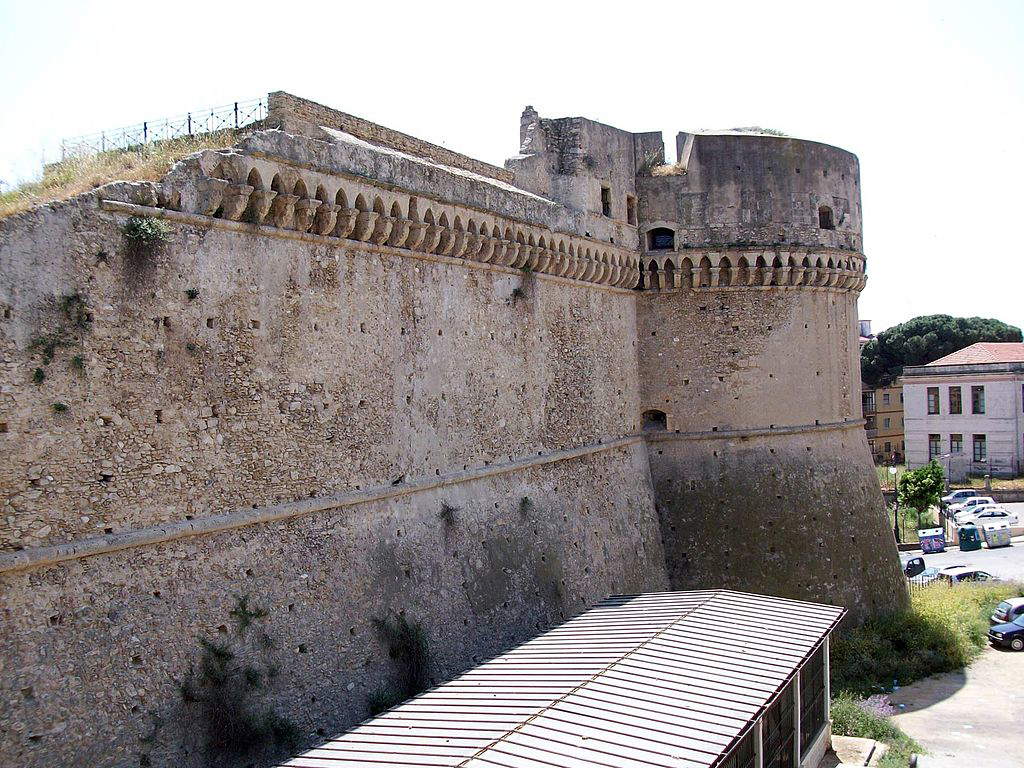
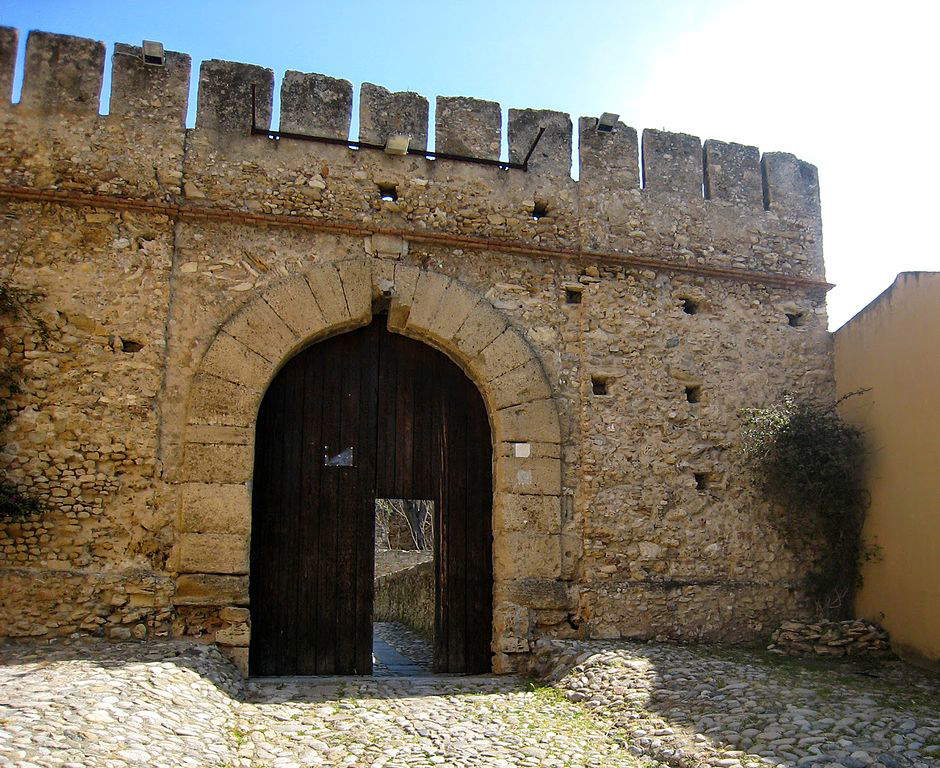
In its most recent layout, inaugurated in 2000, the museum offers an exhibition itinerary, spread over two floors, within large open-space rooms. On the ground floor, the visitor is guided, according to a chronological criterion, to discover the main historical stages of the ancient Greek city of Kroton, starting from its relations with the pre-existing indigenous communities until late antiquity.
“The site of the colony, founded by Greeks from Achaia (a region north of the Peloponnese), according to ancient literary sources,” explains Gregorio Aversa, director of the museum, "was indicated to Miscellus by Pythia herself, the priestess of Apollo’s sanctuary at Delphi. After all, Kroton’s connection to Delphi is confirmed by the presence of that priestess’s main attribute, the Apollonian tripod, on the very coins of Croton. But it is above all the material evidence that shows how reliable the literary information is about the Hellenic presence in this part of Calabria from the last quarter of the 8th century BCE onward. After a particularly prosperous period between the 7th and 6th centuries B.C.E., the city had a new impetus beginning in the second half of the 6th century B.C.E., when the arrival from the Greek island of Samos of the philosopher Pythagoras, with the founding of his school and the contribution of his teachings, would disrupt Crotonian society at all levels and whose outcomes would permanently transform the history of Magna Graecia itself. A further section of the ground floor is then devoted to an in-depth study of urban archaeology, an essential activity carried out in the area by the superintendency, which, since the 1970s, has thus been able to construct an increasingly reliable and detailed picture of the ancient topography of the polis. This is accompanied by a section devoted to the necropolis in the Carrara locality, where some of the many grave goods from this burial ground that remained in use between the late 8th and mid-4th centuries B.C. are illustrated."
The second floor offers, however, an overview of the sanctuaries identified in Crotone. Among the main ones is the one in the Vigna Nuova locality, certainly intended for the cult of Hera in her capacity as liberating goddess, given the presence of a large number of bronze chain stumps dedicated to the deity as ex votos from freed slaves. Again the goddess Hera, this time worshipped as Lacinia, is the protagonist in the sector dedicated to the sanctuary near Capo Colonna with its very important finds discovered inside the small building probably intended to function as a thesaurós. Among others, the Diadema Aureo and a fascinating as well as mysterious Nuragic ship made of bronze stand out for their beauty.
The second floor is also devoted to illustrating some of the known settlements in the area (Krimissa, Petelia, Makalla) that contributed to linking the ancient Greek city to mythical traditions and local cults or influenced by contacts with Hellenic ideologies (Sirens, Philoctetes, Apollo Alaios): primarily those Pythagorean doctrines, of which archaeology over time is helping to provide some, albeit faint but concrete, evidence. The museum exhibits materials from the Neolithic period onward, such as stone axes and obsidian scrapers from Petilia Policastro; of exceptional significance is the fragment of Minoan-Mycenaean pottery (TE I-II / TM I A) from the area of Capo Piccolo, an important settlement of the Bronze Age discovered in 1977 and later investigated by Domenico Marino; also from the prehistoric section, but from the Iron Age, belong the swollen-necked jugs, fibulae of various shapes and rare tools, found in the tombs of Cirò. Of great importance are the two axes with raised edges (one with fine geometric decoration, engraved with a burin, is considered a “unicum”) from the ancient Bronze Age from the Roccabernarda/Petilia Policastro Timpone delle Rose and the hoards, datable to the Final Bronze Age and Iron Age, of bronze axes and artifacts (some finds are “unique”) from Cirò and the territory south of Crotone.

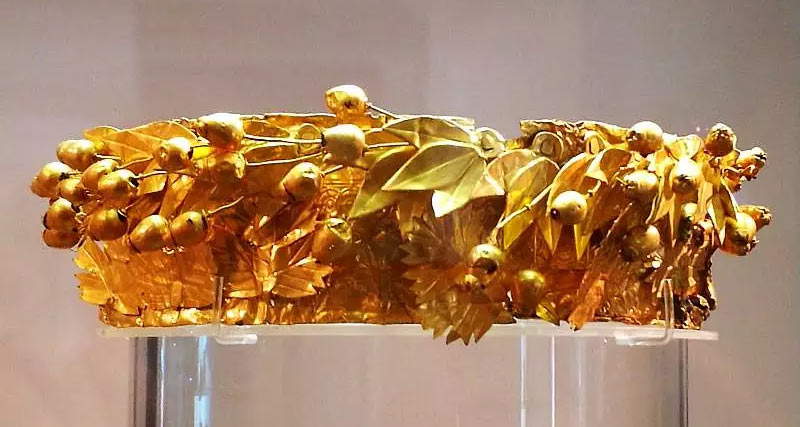
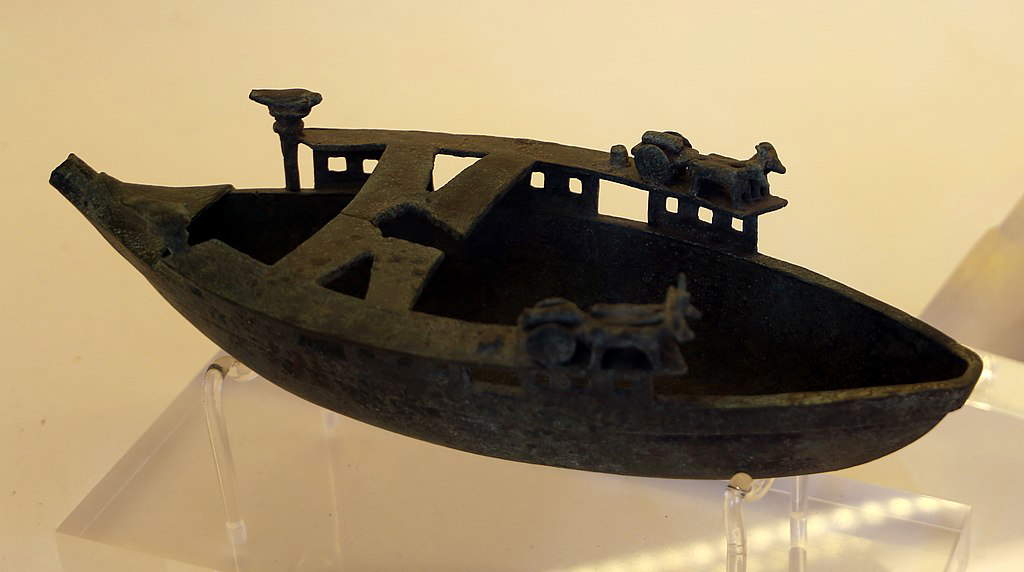

TheGreek period is documented with many artifacts. From the Archaic period are Corinthian ointment vases and various ceramic fragments: of Attic black-figure vases, of a Chalcis vase, etc. Other ceramics come from various centers in Lucania, Apulia and Etruria. From Crotone come various prehistoric and protohistoric materials, an Archaic antefix with a Gorgon’s head, a fictile head of a youth, a small altar with Hercules fighting with the Centaurs, various votive reliefs, some red-figure pottery, an oscillum, and small bronzes of Hercules in assault wearing a leonté. A boundary stone numbered “29” is inscribed in Greek, while two bronze spearheads, probable trophies, bear the inscriptions “Anthropos son of Theognides” and “Aeschylus son of Echestenetus.” An entire section is devoted to finds from the sanctuary of Hera at Cape Colonna: among the exhibits are numerous votive objects, fragments of architectural decorations in marble and terracotta, and fragments of sculptures. Prominent is a fragment of an overpainted black-figure bowl (6th century B.C.), with two bearded, spear-armed figures, wearing turbaned headdresses, facing each other on either side of a monumental tripod (from Capo Colonna, escarpment east of Temple A).
From the area of the so-called Cimino Quotas, on the promontory of Capo Colonna, comes a fine Pentelic marble head (mutilated at the face), in which Apollo citaredo is well recognized, datable to 350-300 BC. The find, which is of considerable interest, was discovered (in the 1970s) by the Krotoniate Archaeological Group. Also on display there is the "treasure of Hera," found in Building B of the Heraion and including, among other things, the aforementioned gold diadem, a belt pendant of indigenous production, and the Nuragic-made lamp in the form of a shuttle.
Since November 2009 the museum has also housed the extraordinary bronze askos in the form of a mermaid (5th century B.C.) from the Murgie di Strongoli, returned from the Getty Museum in Malibu, USA, and the other bronze askos from the 6th century B.C., also in the form of a mermaid, from the southern chora of Kroton. Worldwide only three specimens are known: of these as many as two, therefore, are preserved in Crotone.
Finally, a thematic museum is dedicated to Pythagoras within which, between educational paths and history, the theories of the philosopher and mathematician are traced through installations with which it is possible to practice experiments and put his theorems into practice. A town, therefore, to visit not only for the sea and the food but also to discover in its historical roots of primary importance even from more recent times.
Warning: the translation into English of the original Italian article was created using automatic tools. We undertake to review all articles, but we do not guarantee the total absence of inaccuracies in the translation due to the program. You can find the original by clicking on the ITA button. If you find any mistake,please contact us.